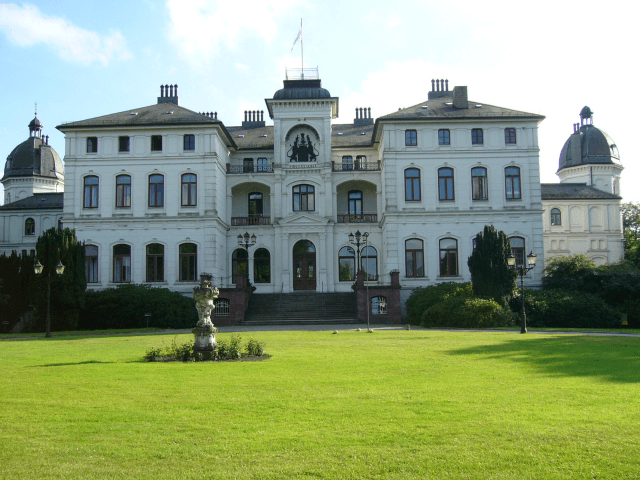Twenty-eight migrants have been handed a historic European palace to live in. The news comes as it is revealed how local governments have overspent on migrant centres.
In the Northern German region of Schleswig-Holstein local residents are outraged at the fact that 28 migrants currently live alone in the luxurious mansion of Schloss Salzau which was turned into an asylum centre last October. The 19th century mansion is meant to hold over 300 migrants, but the low occupancy is merely a symptom of what could create an economic crisis for local governments.
Die Welt reports that communities in the region are upset now about the fact that few migrants live there compared to what they were told about the castle.
While the numbers in the mansion are surprisingly low, it has led to an ever greater revelation that while places in Bavaria and others around the country are flooded with migrants, Schleswig-Holstein has seen so few migrants that many migrant centres are underpopulated or completely vacant.
The centres were expected to create around 600 jobs for local residents who would work at them. No migrants means many of these jobs are either in jeopardy or that the German tax payers will pay for them to stand empty.
Each municipality is paid money per migrant housed in the region. These payments include €2000 per person for “integration” purposes. The state governments foot most of this bill, paying up to 90 per cent of the costs. The local governments are therefore on the hook for rent, employee contracts and more if the migrants do not come. It is estimated that the various towns and cities are sitting on hundreds of thousands of euros worth of maintenance costs alone.
The town of Heide for example employs a security company that currently guards empty barracks and the money to pay them relies on funding from the state government. The guards are contracted until mid-year of 2016 which will end up costing thousands of euros, not even counting the cost of outfitting the barracks which is supposed to house at least 240 migrants.
Many Germans have long wondered about the motivation for small town governments to take in large quantities of migrants. The fact that they are paid handsomely by state governments to do so at tax payer expense perhaps makes it clear.
Generally, seeing fewer migrants should be a blessing to locals as fewer migrants means less chance of seeing the violence and criminality associated with overcrowded migrant centres like the LaGeSo in Berlin. The truth is that local politicians have overspent their budgets on the promise of money from the state, and that if large amounts of migrants do not come, the local people will end up with rising tax bills.

COMMENTS
Please let us know if you're having issues with commenting.